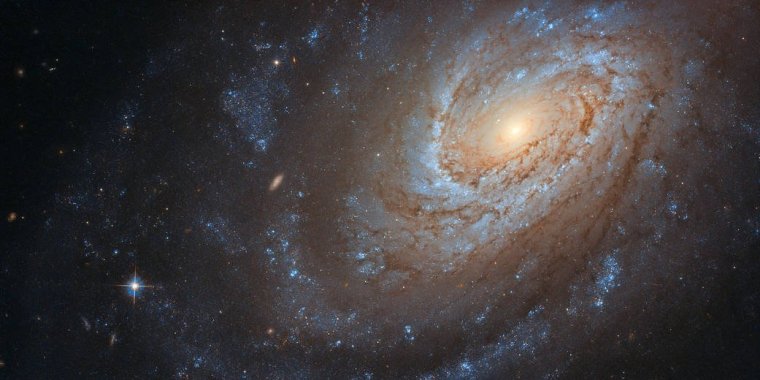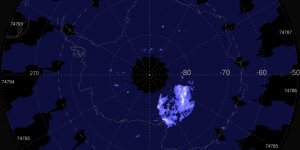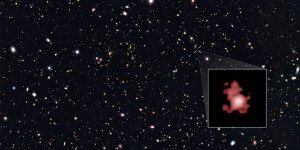| News / Space News |
Astronomers Observe Death of Distant Galaxy
Astronomers have, for the first time, witnessed the death of a distant galaxy, which they describe as a "truly extreme event."

Astronomers Observe Death of Distant Galaxy. Image credit: ESA/Hubble & NASA, D. Leonard
, scientists were "thrilled" to be able to capture this rare phenomenon recently using the Atacama Large Millimeter/submilimeter Array of telescopes in Chile.
It has taken about nine billion years for the light from the starburst galaxy ID2299 to reach Earth. So, when astronomers happened to observe it by chance, they witnessed the universe as it appeared at just 4.5 billion years old.
Astronomers say that ID2299 is losing 10,000 suns worth of gas each year — rapidly depleting fuel needed to form new stars. This startling release of gas appears to be the result of two galaxies violently colliding and merging together to create ID2299.
The galaxy is also currently forming stars at a rate hundreds of times faster than the Milky Way — using up the rest of its precious gas supply. Because of this, ID2299 is expected to die relatively soon, in just a few tens of thousands of years.
"This is the first time we have observed a typical massive star-forming galaxy in the distant universe about to 'die' because of a massive cold gas ejection," lead author Annagrazia Puglisi said in a statement.
Astronomers believe the phenomenon is the result of galaxies merging because they were able to witness a rare "tidal tail," usually too faint to see in distant galaxies. This elongated stream of stars and gas, astronomers suggest, is the direct result of the galactic merger.
They only observed the galaxy for a few minutes, but it was enough to spot the elusive tidal tail.
"Our study suggests that gas ejections can be produced by mergers and that winds and tidal tails can appear very similar," says study co-author Emanuele Daddi. "This might lead us to revise our understanding of how galaxies 'die.'"
If the astronomers are correct that the merger led to the massive loss of gas, they will need to reconsider prior theories on how galaxies form and evolve — and how they die. Other theories have suggested that wind from active black holes or intense star formations are responsible for such deaths.
"Studying this single case unveiled the possibility that this type of event might not be unusual at all and that many galaxies suffered from this 'gravitational gas removal', including misinterpreted past observations," said co-author Dr. Jeremy Fensch.
"This might have huge consequences on our understanding of what actually shapes the evolution of galaxies." (Tasnim News Agency)
YOU MAY ALSO LIKE





